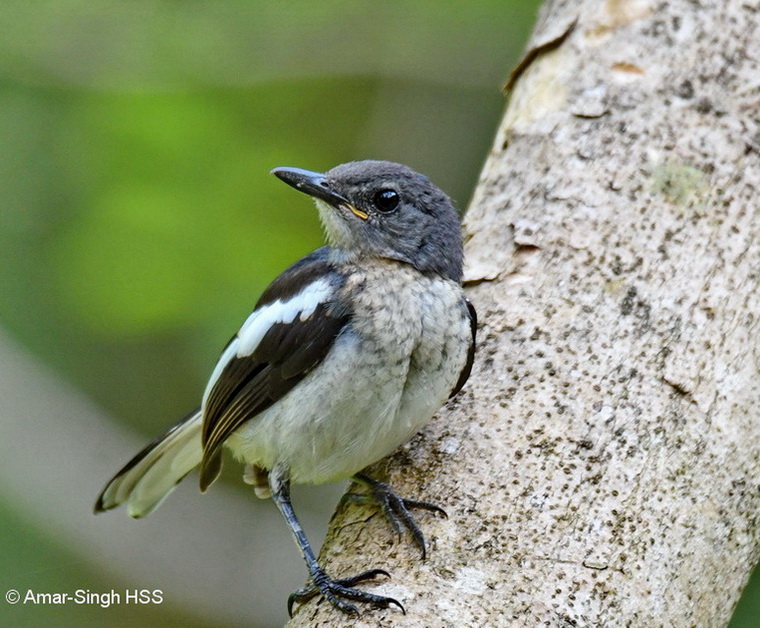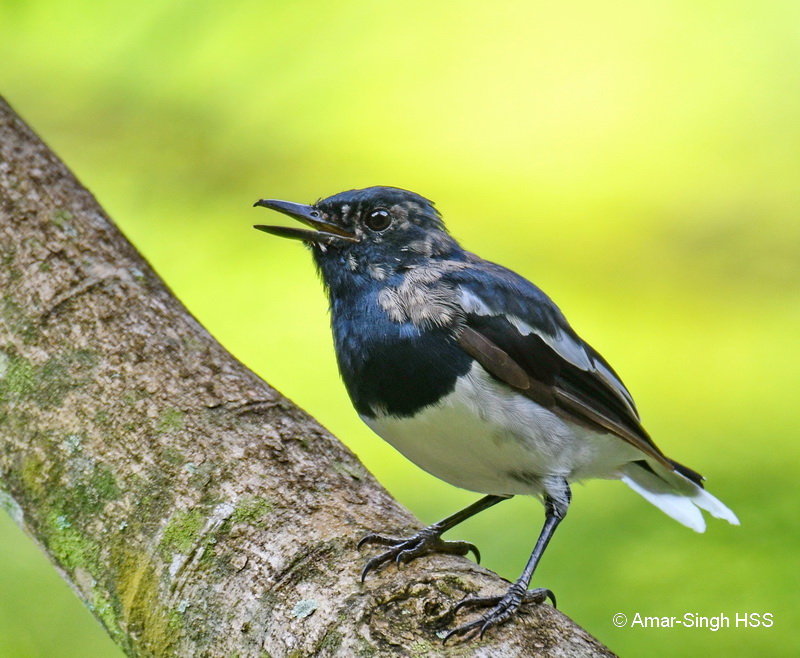“Over the past 10-15 years I become more aware of Oriental Magpie-robin (Copsychus saularis musicus) with odd tail development or moults.
The above is a juvenile (notice gape and plumage) with what I expect as ‘normal’ development. The tail feathers have grown out, black above and white below.
“The image above is of an odd immature male bird, the kind that has become more common to observe in recent years. The plumage in general is moulting into adult plumage, no juvenile gape, but the tail is short with the white under feathers better developed that the black feather on top. I do not consider this an adult moult but a first year bird.
“Above shows a bird that has adult male plumage but again the tail is odd with white feathers grown out, but the black covering feathers still to develop. Is this the final stage in some juvenile-to-adult-moult or is this an adult-tail-moult?
“The above is the same bird feeding on a caterpillar.”
Dato’ Dr Amar-Singh HSS
Ipoh, Perak, Malaysia
22nd September 2017
Location: Ipoh, Perak, Malaysia
Habitat: Urban environment













3 Responses
In my opinion, those birds do not appear to be moulting, but have suffered loss of tail feathers for other reasons.
The fact that all three pictures show male birds makes me suspect that these are birds that escaped from attempts to trap them using bird lime.
Males will come down to challenge a decoy, and could land on a branch upon which adhesive has been spread.
The central tail feathers of Magpie Robins, (and Shamas) tend to be the first to get stuck when the bird attempts to escape. Sometimes, the bird breaks free, but leaves the tail feathers behind.
If you visit shops where wild-caught Magpie Robins and Shamas are offered for sale, you will see many whose plumage has been damaged in the manner shown in the pictures.
I saw a pair of magpie robins with their juvenile at my bird feeder this morning. The male looked like the picture above with only 2 white feathers and the female is completely without her tail. I have a picture if you’d like. Anyway I know these birds and they had perfect tails before they started nesting. Perhaps their tails were damaged during the nesting process? I live in Singapore and I don’t think they do any trapping nearby.
I have also observed a similar Magpie Robin in my backyard. Two prominent short white tail feathers were visible and no black feathers.
Have you been able to solve this mystery?